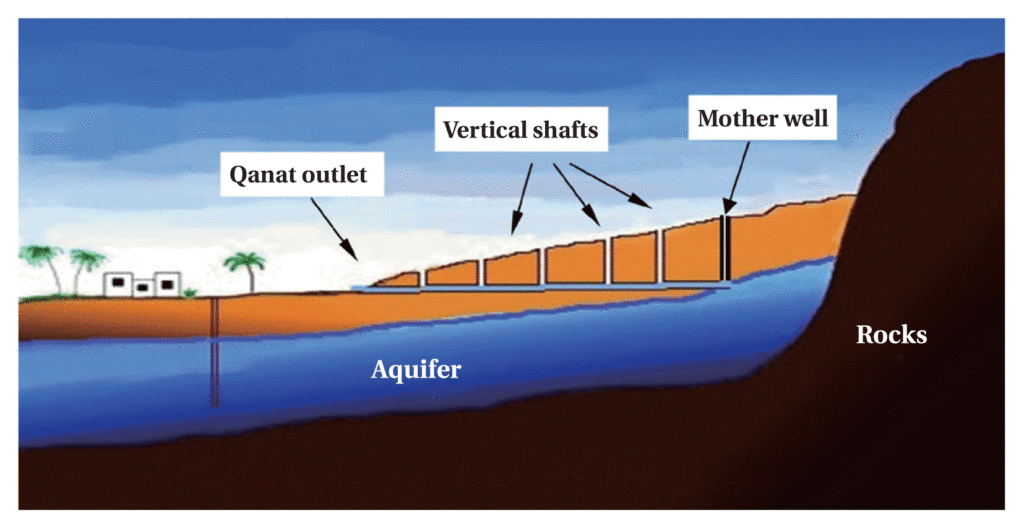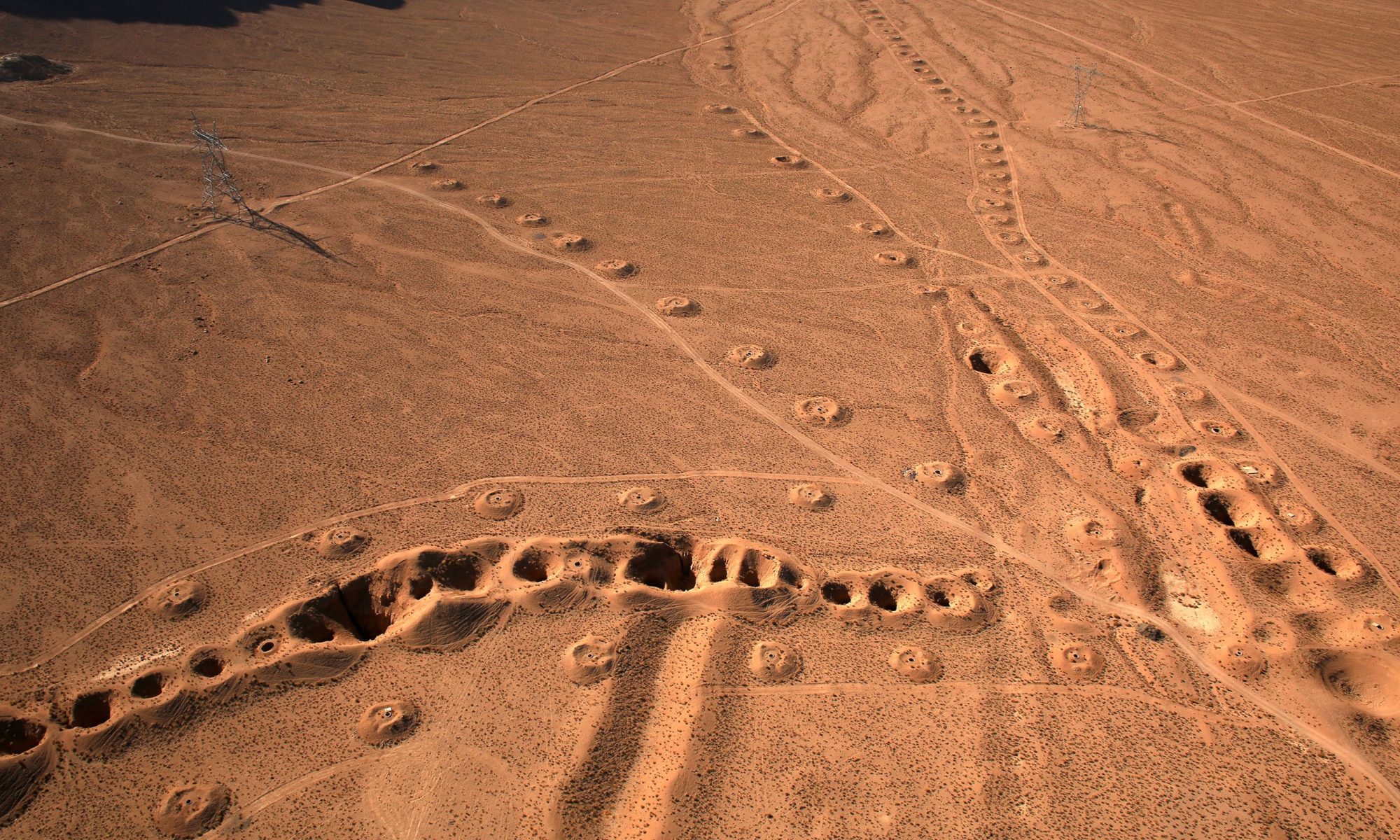Featured Image: Areal view of the vertical shafts of a qanat in Jupar, Iran. S.H. Rashedi / CC BY-ND via UNESCO.
Authors: Ataie-Ashtiani, B., & Simmons, C. T.
Reliable sources of water are essential for every civilization. However, the Western science of hydrology is relatively young. It started perhaps at the turn of the 19th century when John Dalton completed the first water balance for England and Wales by estimating the amount of water that fell as precipitation and left as evaporation and flow from rivers to oceans. Since ancient times, civilizations have built water infrastructure like aqueducts and wells, and writings by Aristotle and Plato suggest that the ancient Greeks had a basic understanding of the water cycle. Though in many respects, the study of hydrology in Europe and the Mediterranean stagnated between the time of these early philosophers and the 19th century.
Meanwhile in the Middle East, hydrology and water engineering advanced. A book from 11th century Persia by Abubakr Mohammad Karaji (953 CE–1029 CE) called “The Extraction of Hidden Waters” reveals a sophisticated understanding of hydrology, water quality, and the design, construction, and maintenance of water supply infrastructure. This remarkable book was virtually unknown in Western countries until the 1970s when it was first translated into French, and it was only translated into English in 2011.
Karaji was born near Tehran, Iran, though he spent his career in Baghdad under the Abbasid rulers during the Islamic Golden Age. He was a mathematician and engineer, and wrote books on algebra and geometry, along with his landmark text on hydrology. We know he was motivated by the vital importance of water for society, as he prefaced his book by stating “I do not know any other profession more beneficial than extraction of hidden water, as it flourishes and cultivates lands, improves people’s welfare, and grants ample profits.”
Karaji understood that the source of most water in streams and in the ground was rain and snow, and that water returned to the atmosphere via evaporation. Meanwhile in Europe, the idea of subterranean water rising up from some deep unseen source through the Earth to supply springs and rivers remained into the 19th century. Karaji dismissed this idea with the very concept that is still foundational to groundwater hydrology today: water flows from higher elevations to lower elevations proportional to the force or pressure it experiences. He correctly deduced that for water to flow from a spring, it must have a source that is at a higher elevation. This is truly remarkable given that he was living centuries before gravity or forces had been explained.

As the title suggests, much of “The Extraction of Hidden Waters” is dedicated to the construction of the infrastructure needed to supply water in arid places. In particular, the technology used at this time was the qanat or kariz, an underground tunnel designed to collect groundwater and direct it downhill and out to the surface where it could be used. This technology is so robust that it is still in use today in some places. Karaji described the process of designing, constructing, and maintaining qanats, and provided detail on how to transfer operation of the structures to the users after construction was finished. While qanats were first built in Persia a millennium before Karaji lived, the remarkable level of detail from design to delivery and maintenance in this book makes it the first known writing on construction management.
Western science has a long history of overlooking the contributions of scientists from other cultures. Studying and teaching the work of scientists like Abubakr Mohammad Karaji is important for making science and engineering more inclusive and diverse by recognizing the important contributions that non-western scientists have long made. The centuries that passed before translation of Karaji’s landmark book may have limited its influence on the field of hydrology today, but we can speculate that wider access to this book when it was published would have profoundly affected the trajectory of advances in hydrology, and water engineering. By studying past contributions to science from different cultures, we make way for advances in the future that can broadly benefit all of society.
The Extraction of Hidden Waters: 11th century Persian scientist laid the foundations for hydrology and water engineering by David Litwin is licensed under a Creative Commons Attribution-NonCommercial-NoDerivatives 4.0 International License.

